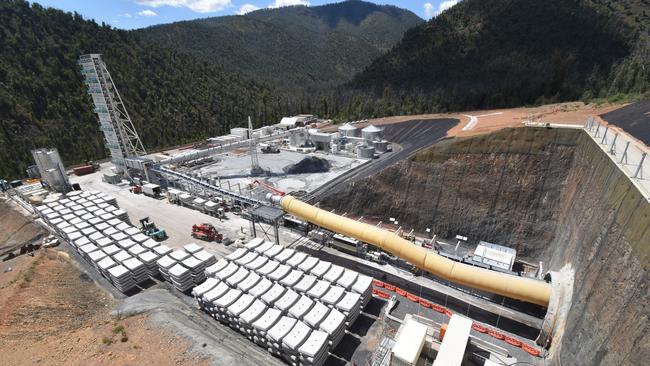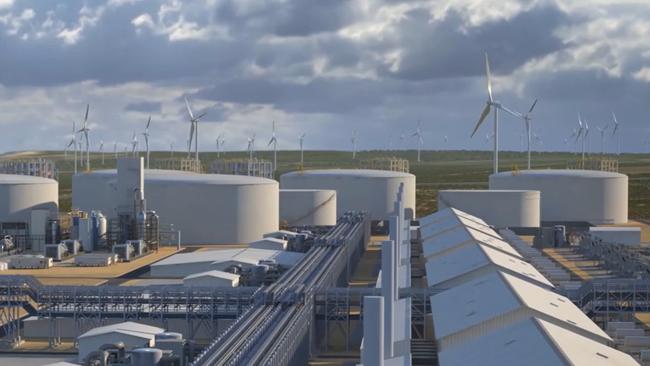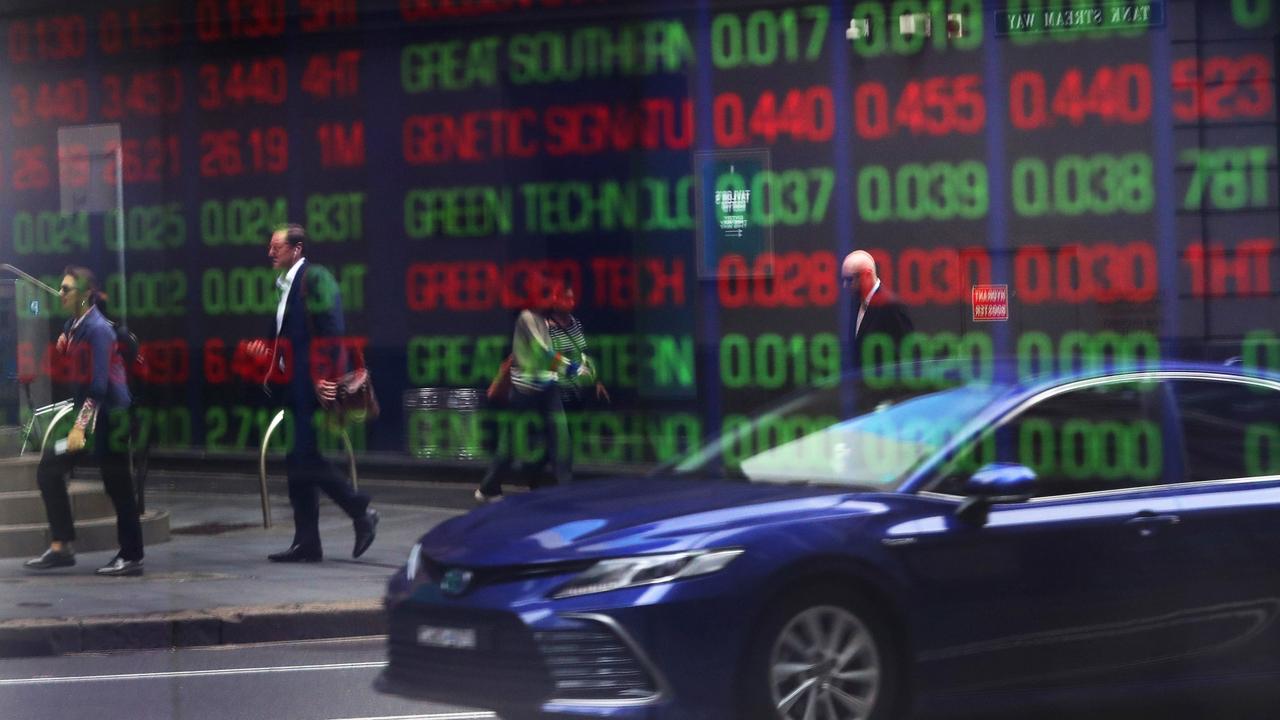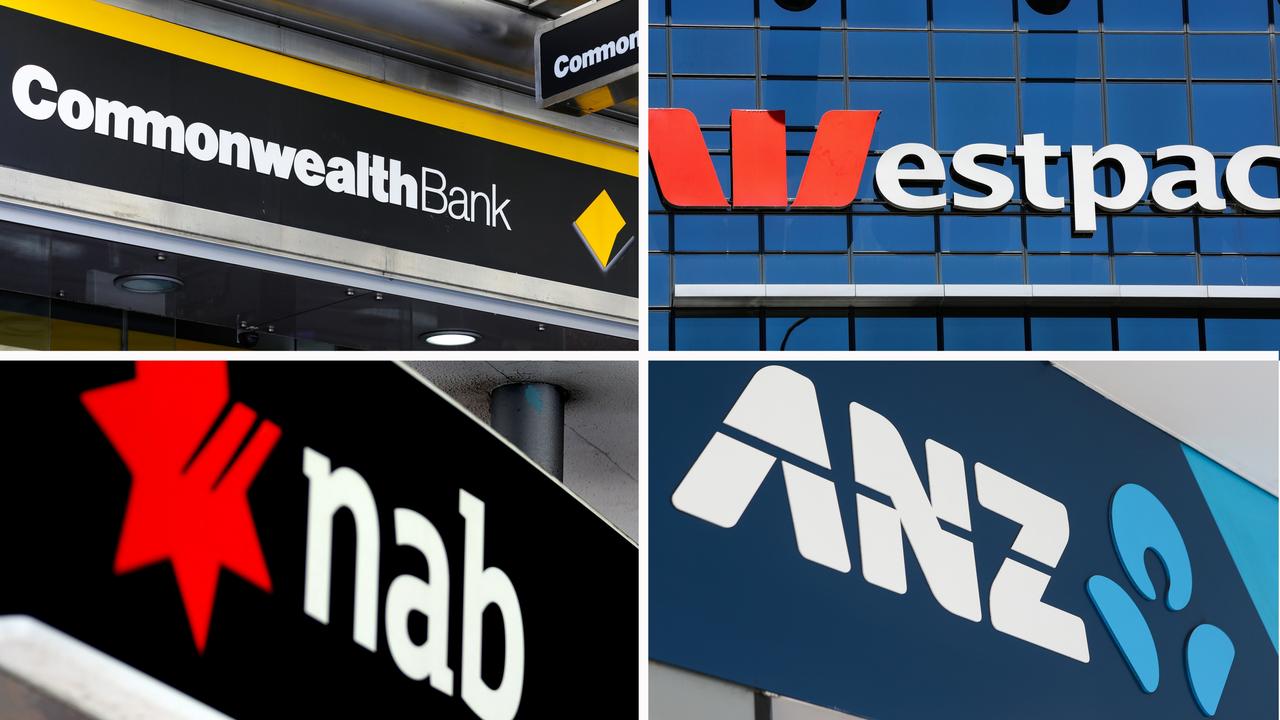Investors bet billions on Australia’s race to net zero
Major global energy companies looking to pour tens of billions into the race to net zero are flocking to Australia for a piece of the renewables market.

Companies
Don't miss out on the headlines from Companies. Followed categories will be added to My News.
International investors are flocking to Australia to buy into the next generation of renewable energy assets, with global energy and infrastructure companies looking to pour tens of billions into the race to net zero.
Major super funds are big players too, meaning working Australians have a stake in the nation’s energy transformation.
Just this week Malaysian energy giant Petronas officially launched its Australian renewables arm Gentari Solar Australia, which aims to increase its local footprint more than 10-fold – at a cost likely to run to several billion dollars – to between five and eight gigawatts of installed renewable capacity by 2030.
And international investor Copenhagen Infrastructure Partners, which manages money for institutional investors looking to back early stage renewables investments globally, has more than 30GW of energy projects under development in Australia, with a potential capital value of about $100bn.
CIP Australia head Jørn Hammer said the fundamentals for renewables in Australia were “extremely strong’’, with good access to renewable resources such as wind and sun.
CIP has particular expertise in the development of wind power, and along with superannuation fund CBUS is a key investor in the major Star of the South offshore wind project planned for waters off the Victorian coast.

Mr Hammer said CIP, which had a great depth of experience with such projects in other countries, brought a lot of expertise, and saw large potential for offshore wind in Australia.
Mr Hammer said the offshore wind market was undervalued currently in Australia, and pointed out that it had specific benefits when compared with other renewables.
This included the fact that offshore wind projects often produced energy at different times to onshore projects, delivering a more constant supply of energy to the grid overall.
There was also the ability to develop projects close to large population centres such as the major cities, without taking up valuable land.
Mr Hammer said CIP and its investors were focused on funding and developing new projects – rather than just investing in those which already existed or were at later stages of development, in order to have a real impact on the path to net zero.

Mr Hammer said CIP invests across the whole suite of renewables, however he believed the company played an important role in spurring the conversation around offshore wind locally.
“When we arrived to Australia, I don’t think there was anyone talking about that seriously.
“Now, it seems everyone is talking about offshore. So we see that as a key attribute of CIP that we can bring those new technologies to new markets.’’
Meanwhile Gentari chief renewables officer Kian Min Low said this week that his company wanted to boost its local footprint from 422MW of installed capacity currently – and another 765MW under development – to as much as 8GW by 2030.
Gentari bought Australian-based renewables company Wirsol Energy from its German parent for a rumoured $1bn earlier this year, and is currently developing the Maryvale solar and energy storage project in New South Wales as well as the Barnawartha solar and energy storage project in Victoria, both of which are expected to reach a final investment decision soon with a combined capacity of more than 500MW.
Click here to find all the stories in Future Energy campaign
Mr Low said while the portfolio was currently focused on solar and storage, they would also be looking to grow in wind and potentially hydrogen.
“We probably aim to be between five and eight gigawatts by 2030,’’ Mr Low said.
Mr Low said the company would be investing a “significant amount given the scale of the investments’’, but would not be drawn on a ballpark figure.
“Suffice to say it will be a significant amount of foreign direct investment into the Australian market,’’ he said.
Mr Low said his colleagues were also monitoring the hydrogen sector.
“My hydrogen colleagues are here regularly, scouting the market, looking for opportunities to invest in hydrogen production,” he said.
“Australia is quite lucky in that it’s got the resources available to potentially produce some very low cost green hydrogen for the world market.
“So it’s got the right ingredients … and we would like to see if we can actually make some investments in this area in a short space of time.’’
Gentari’s broader goals across the Asian region are to build a renewables portfolio of 30GW-40GW by 2030 and capture 10 per cent of the market share in electric vehicle infrastructure, or about 25,000 charging points.
CIP and Gentari are just two of the many companies investing in Australian renewables, with law firm Minter Ellison’s 2023 Australian Renewables Report saying interest remains strong.
“The proportion of North American respondents who plan to invest in Australia (67 per cent) has nearly doubled since 2021,’’ the report says.
“European investors are also looking to increase their allocations.
“Following a drop in investment in renewable energy infrastructure projects from 2018 through 2020, transaction volume and values began a steep and prominent rebound, reaching
record heights in 2022.
“If sentiment remains favourable and investment continues to trend upwards, 2023 could see yet another record year.’’
Minter Ellison said Australia’s vast landmass and favourable climate conditions make Australia “ideal for the construction of new solar and wind farms’’.
OFFSHORE STAR CAN LIGHT UP 1.2 MILLION HOMES
The Star of the South offshore wind project that could power 1.2 million homes is being backed by the world’s largest dedicated clean energy investor, Copenhagen Infrastructure Partners.
And while that project is proposed for Bass Strait off Victoria’s Gippsland, the company says NSW also has great potential for offshore wind development, particularly the Hunter and Illawarra regions.
Partially owned by millions of Australian workers and retirees through their super funds, including Cbus, Star of the South is the nation’s most advanced offshore wind project.
It is touted as being able to generate up to 20 per cent of Victoria’s energy needs, create an estimated 2000 direct Victorian jobs and more than $10 billion in economic benefits.
There would be 760 Gippsland jobs during construction and 200 ongoing local jobs once it’s up and running.
CIP says the Hunter Valley that has powered Australia for decades through coal is also in a prime position to benefit from offshore wind development when coal plants are inevitably shut down.

It says the strong ocean winds off the Hunter coast blow at different times of the day to those on land, which would help to keep a steady flow of power and keep electricity prices under control.
“Going offshore, we can catch strong and consistent ocean winds, build larger-scale projects and protect land onshore for other important needs,” Star of the South CEO Charles Rattray said.
“These offshore wind farms are amazing – they pump out massive amounts of electricity, which is exactly what’s needed to ensure energy security and avoid issues like price spikes and blackouts as large coal generators retire.”
The project has been developed under a Commonwealth Exploration Licence since 2019 and is in advanced stages of feasibility studies and environmental assessments. The aim is for first power generation by the end of the decade.
PUMPED OVER $6.5BN GREEN ENERGY HUB FOR NORTHERN AUSTRALIA
Danish renewable energy giant Copenhagen Infrastructure Partners’ $6.5 billion Capricornia Energy Hub, proposed for the Eungella Hinterland, would be one of the largest renewable energy projects in Northern Australia.
The hub is CIP’s flagship project in its Queensland development pipeline of more than 5GW of renewable generation and storage projects, representing a potential capital investment of more than $12 billion.
The proposed hub would be a wind, solar, and pumped hydro-electric energy storage scheme west of Mackay.
It would turn variable renewable energy into dispatchable green power
The company says the initial stage would be the pumped hydro scheme, operational by 2029 and the most advanced project of its kind in Queensland.
Located in the North Queensland Renewable Energy Zone, it would include four water reservoirs, connecting waterways, two powerhouses and 20km of new transmission lines.

It would create more than 600 jobs during construction and 65 jobs during operations, including training and job opportunities for First Nations Peoples in partnership with Widi Aboriginal Corporation.
Copenhagen Infrastructure Partners says it is committed to ensuring the pumped hydro project is consistent with the state government’s Queensland Energy and Jobs Plan and supports the government’s own pumped hydro investments.
“It is exciting to partner with the Queensland Government, which is committed to the suite of technologies needed to deliver clean, affordable, and reliable power to Queenslanders,” CIP vice president Matthew Stuchbery said.
A pre-construction Community Benefit Fund of $50,000 per year will fund projects in the Eungella Hinterland that enhance sustainability, promote tourism, and raise awareness and respect for cultural heritage.
“This fund is one of the small ways that we can give back to the local community, who we want to play a pivotal role in the formation of our project,” project director Sebastian Burgman said.
$30BN PLAN FOR WORLD’S BIGGEST WIND FARM IN SA
The Gawler Ranges and surrounding lands would be home to the largest onshore wind farm in the world under Danish renewable energy giant Copenhagen Infrastructure Partners’ $30 billion Evergreen project.
The company says Evergreen, proposed for the Upper Spencer Gulf and Eyre Peninsula, would also be one of the largest green hydrogen projects in the country.
It says Evergreen has the potential to accelerate the regions’ green reindustrialisation, combined with the South Australian government’s Hydrogen and Jobs Plan and efforts from existing industries.
As The Advertiser reported in May, the project would include about 4GW of solar generation capacity, 10GW of wind and 7GW of electrolysis.

That is more than double SA’s current network-wide generation capacity of about 6.6GW.
The 1600 wind turbines involved would make for the largest onshore wind farm in the world.
The project would create up to 1500 jobs during construction and up to 500 permanent jobs during operations.
And the company says the indirect benefit would be even greater, helping South Australian businesses produce and sell clean products such as iron and steel, cement, and fertiliser, and helping create a clean energy export industry.
The scale of construction and infrastructure would also create an opportunity for manufacturing and maintenance centres to be established in the state, it says.
CIP says it has put the community first by spending more than a year engaging with local farmers, Indigenous groups and the broader community.
“The combination of South Australia’s world-class wind and solar resources, and the way the South Australian government has prioritised hydrogen policy makes it very attractive to investors”, vice president Matthew Stuchbery said.
“One of the main things that’s driving our strategy is building industry up through Whyalla and Port Augusta. The opportunities for an industry to be built here are immense.”
More Coverage
Originally published as Investors bet billions on Australia’s race to net zero





